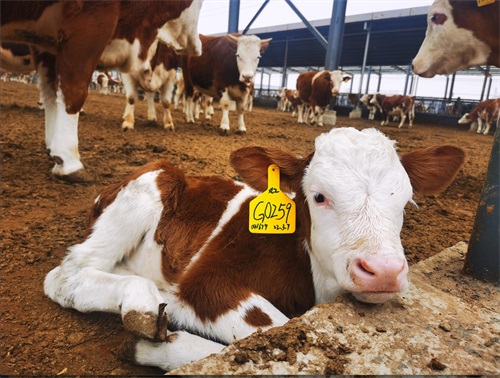Twin pregnancies in horses are a bit like an unexpected twist in a story—surprising, dramatic, and often not what breeders hope for. While twin births are celebrated in many species, for mares, they usually spell trouble. That’s where ultrasound comes in. With the help of modern veterinary imaging, breeders now have a reliable way to identify and manage twin pregnancies early, reducing risk to both the mare and the potential foals.
Why Twin Pregnancy Is a Concern in Horses
Twin pregnancies in horses are uncommon, but when they do occur, they’re usually problematic. Unlike cattle or sheep, the equine uterus isn’t designed to carry two fetuses to term. The blood supply and space simply aren’t sufficient for both to thrive. That often leads to abortion of one or both fetuses, or in some cases, stillbirths or weak foals that require intensive care.
From a practical standpoint, this represents both an emotional and financial setback for horse owners and breeders. A lost pregnancy means lost time, delayed breeding goals, and increased veterinary costs. That’s why early detection is such a big deal—it gives owners a chance to act before things go downhill.
How Ultrasound Changed the Game
Before ultrasound became widely accessible on breeding farms, detecting twins relied on manual palpation and guesswork. Vets would check for unusual uterine tone or size differences, but the accuracy wasn’t great, especially in the very early stages of pregnancy.
Today, ultrasound has become the go-to tool for monitoring early pregnancy in mares. Portable systems are common on larger breeding operations, and many veterinarians carry them in their trucks for routine checks. The clarity, precision, and real-time imaging allow practitioners to spot two embryos as early as day 13 to 15 post-ovulation. That’s a critical window—because if you wait too long, the chance to safely intervene starts to shrink.
What the Ultrasound Reveals
A typical equine pregnancy check with ultrasound involves inserting a probe rectally and scanning the uterus. Around day 14, a normal pregnancy shows up as a single, small, black fluid-filled vesicle with a clearly defined border. If there are two, that’s your first red flag.
There are two types of twin pregnancies:
Unilateral twins: Both embryos are in the same uterine horn.
Bilateral twins: One embryo is in each uterine horn.
Unilateral twins have an extremely low chance of both surviving to term. Bilateral twins fare slightly better but still carry a high risk. Vets use this information to guide what happens next.
What Happens After Twin Detection
If twins are spotted early, the usual course of action is manual reduction—a procedure where one of the embryos is carefully pinched or collapsed using a finger through the rectal wall. This may sound intense, but when done by an experienced vet, it’s relatively safe and highly effective. The remaining embryo often develops normally, and the pregnancy continues without issue.
Some owners may hesitate at the idea of reducing a viable embryo, but the reality is that leaving both increases the odds of losing both. This is where good communication between vet and breeder becomes essential. Everyone wants what’s best for the mare, and that usually means giving one embryo the best chance at life.
In cases where the twins are detected later—say around day 30 or beyond—the options become more limited. Ultrasound still plays a key role, helping to track development and look for signs of complications like uneven growth or signs of distress. But by that stage, manual reduction carries higher risks, and the chances of a successful outcome drop.
Real-Life Experience on Breeding Farms
On many horse breeding farms across the U.S., UK, and Australia, pregnancy checks using ultrasound are now part of the standard post-breeding protocol. Breeders typically schedule their first scan around day 14 post-ovulation, then follow up at days 28 and 45 to confirm normal development.
A farm manager in Kentucky told us, “We had a mare last year with bilateral twins detected on day 13. Our vet was able to reduce one, and the mare carried the other to term—beautiful filly. Without ultrasound, we would’ve never known, and odds are we would’ve lost both.”
Stories like this are common, and they show how technology, when used correctly and promptly, becomes more than just a tool—it becomes a safety net.
Other Benefits of Using Ultrasound in Equine Reproduction
Beyond detecting twins, ultrasound is used to:
Confirm ovulation timing for breeding
Check follicle development
Monitor uterine health (e.g., fluid retention or cysts)
Track fetal heartbeat and growth throughout gestation
It’s non-invasive, doesn’t require sedation, and offers instant feedback. For equine vets, it’s one of the most valuable tools in the reproductive toolbox.
Challenges and Limitations
Of course, ultrasound isn’t magic. Image quality can be affected by factors like probe frequency, mare size, or operator experience. Also, in some cases, twin embryos may not be easily visible if they are tightly grouped or one is hidden behind the other. That’s why follow-up scans are important. A single scan at day 14 may not catch everything.
Another consideration is timing. The earlier a twin pregnancy is detected, the more options you have. Miss that early window, and the chances of a smooth reduction diminish. This is why many veterinarians recommend scanning every mare that’s been bred, even if it seems unnecessary at first.
Takeaways for Breeders
For anyone involved in horse breeding, here are a few key takeaways:
Early scanning is essential: Aim for the first scan between days 13–15 post-ovulation.
Twin detection is common in high-value mares: Some bloodlines may even have higher chances of releasing multiple ova.
Don’t delay intervention: The earlier a twin is reduced, the better the outcome.
Ultrasound is worth the investment: Whether you own your own scanner or hire a vet with one, it pays for itself in saved pregnancies and healthier foals.
The Broader Impact
Ultrasound technology has helped bring science and predictability into a process that was once filled with guesswork. For equine breeders, that means better planning, improved foal survival, and a more professional approach to reproductive care.
Many American and European breeding farms now train their staff to perform basic scans under veterinary supervision. While final decisions are always left to the professionals, having eyes on the mare earlier and more often can be a game-changer.
Ultimately, detecting twin pregnancies early is less about eliminating risk entirely and more about managing it wisely. And with the help of a simple ultrasound probe and a skilled hand, what was once a major threat can now be handled with confidence.









